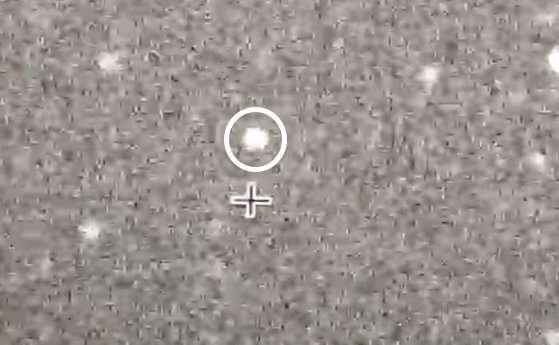New Horizons scientists puzzled by lack of a 'light curve' from their Kuiper Belt flyby target

NASA's New Horizons spacecraft is bearing down on Ultima Thule, its New Year's flyby target in the far away Kuiper Belt. Among its approach observations over the past three months, the spacecraft has been taking hundreds of images to measure Ultima's brightness and how it varies as the object rotates.
Those measurements have produced the mission's first mystery about Ultima. Even though scientists determined in 2017 that the Kuiper Belt object isn't shaped like a sphere – that it is probably elongated or maybe even two objects – they haven't seen the repeated pulsations in brightness that they'd expect from a rotating object of that shape. The periodic variation in brightness during every rotation produces what scientists refer to as a light curve.
"It's really a puzzle," said New Horizons Principal Investigator Alan Stern, of the Southwest Research Institute. "I call this Ultima's first puzzle – why does it have such a tiny light curve that we can't even detect it? I expect the detailed flyby images coming soon to give us many more mysteries, but I did not expect this, and so soon."
What could explain the tiny, still undetected light curve? New Horizons science team members have different ideas.
"It's possible that Ultima's rotation pole is aimed right at or close to the spacecraft," said Marc Buie, also of the Southwest Research Institute. That explanation is a natural, he said, but it requires the special circumstance of a particular orientation of Ultima.
"Another explanation," said the SETI Institute's Mark Showalter, "is that Ultima may be surrounded by a cloud of dust that obscures its light curve, much the way a comet's coma often overwhelms the light reflected by its central nucleus." That explanation is plausible, Showalter added, but such a coma would require some source of heat to generate, and Ultima is too far away for the Sun's feeble light to do the trick.
"An even more bizarre scenario is one in which Ultima is surrounded by many tiny tumbling moons," said University of Virginia's Anne Verbiscer, a New Horizons assistant project scientist. "If each moon has its own light curve, then together they could create a jumbled superposition of light curves that make it look to New Horizons like Ultima has a small light curve." While that explanation is also plausible, she adds, it has no parallel in all the other bodies of our solar system.
So, what's the answer?
"It's hard to say which of these ideas is right," Stern said. "Perhaps its even something we haven't even thought of. In any case, we'll get to the bottom of this puzzle soon – New Horizons will swoop over Ultima and take high-resolution images on Dec. 31 and Jan. 1, and the first of those images will be available on Earth just a day later. When we see those high—resolution images, we'll know the answer to Ultima's vexing, first puzzle. Stay tuned!"
Provided by Johns Hopkins University





















